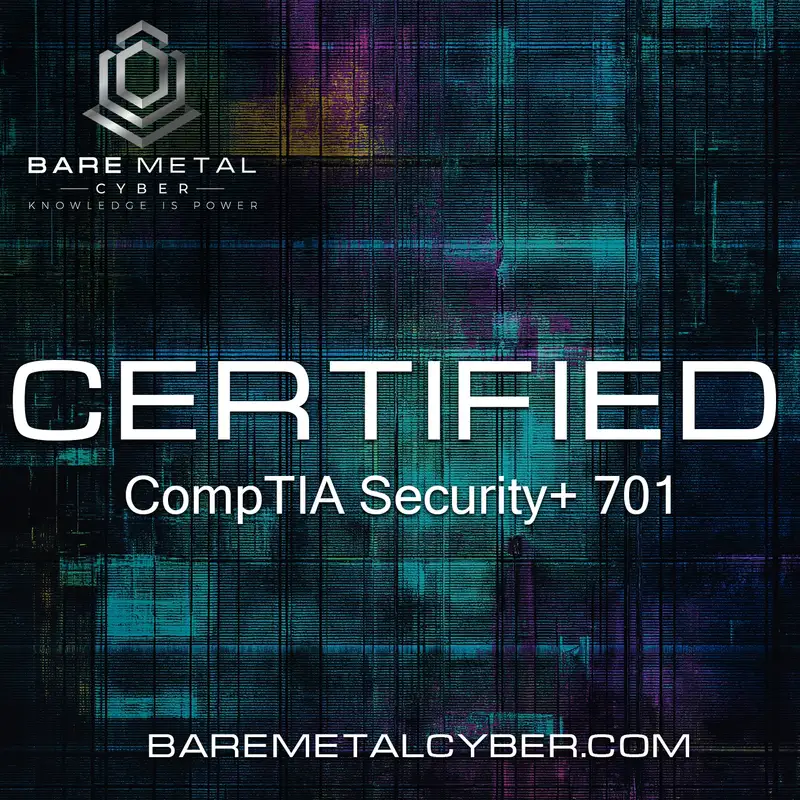Episode 178: Introduction to Domain Five — Security Program Management and Oversight
Cybersecurity isn’t just about blocking attacks and managing firewalls. It’s also about building policies, assessing risk, managing vendors, and aligning security with the overall goals of the business. That’s the focus of Domain Five: Security Program Management and Oversight. This domain gives you the big-picture understanding of how security fits into the way organizations function. It teaches you to think beyond the keyboard and start connecting what happens in the server room to what matters in the boardroom.
Domain Five accounts for 20 percent of the Security Plus exam. That makes it one of the most heavily weighted domains—second only to Security Operations. And while it might feel less technical than domains about architecture or malware, make no mistake—this content is essential. Because the reality is, cybersecurity doesn’t exist in a vacuum. It exists inside budgets, contracts, regulations, and organizational priorities. If you want to work in security, you need to speak the language of governance, compliance, and risk.
Let’s start with what this domain covers. One of the central themes is governance—the policies, procedures, and leadership decisions that define how security is managed within an organization. You’ll learn how security policies are created and enforced, how compliance requirements are met, and how decisions are guided by risk frameworks. This includes understanding the role of security governance structures—like committees, standards, and program charters—and how they shape everything from onboarding to audits.
You’ll explore how to build and maintain security policies, what goes into an acceptable use policy, how to write a data retention policy, and how to design procedures that support those policies day to day. You’ll also study regulatory frameworks and standards, including GDPR, HIPAA, and other laws that impact how data is stored, transmitted, and protected.
Auditing and compliance are also major parts of this domain. You’ll learn the difference between internal audits, which are conducted by your own organization to measure performance against internal policies—and external audits, which are conducted by outside parties to determine whether you’re meeting required standards. You’ll also see how attestation, acknowledgement, and reporting help demonstrate that users are aware of their responsibilities and that your security controls are being enforced.
Another major component of this domain is risk management. You’ll learn how to perform a business impact analysis, or BIA, to determine which systems are critical and what the consequences would be if those systems failed. You’ll study risk identification, risk assessment, and the different strategies for managing risk—like accepting, avoiding, transferring, or mitigating it. You’ll also encounter frameworks like the NIST Risk Management Framework, ISO standards, and general best practices for assigning risk ownership and measuring risk tolerance.
Let’s talk about some specific terms and ideas you’ll need to know. One of them is RTO, or Recovery Time Objective. This is the maximum acceptable amount of time a system or service can be down before it causes serious harm to the business. Another is RPO, or Recovery Point Objective. That tells you how much data loss is acceptable in a recovery scenario—measured in time. These values are critical when you’re building business continuity and disaster recovery plans.
You’ll also need to understand service-level agreements—SLAs—which define what level of service a vendor is contractually required to deliver. That could include uptime guarantees, response times, and resolution times. And speaking of vendors, this domain covers third-party management in detail. That includes how to vet vendors during selection, how to monitor them over time, and how to assess their security posture using questionnaires, assessments, and audits.
You’ll learn about legal documents like NDAs, or non-disclosure agreements, which protect intellectual property and sensitive information. You’ll also encounter terms like memorandum of understanding, memorandum of agreement, and business partner agreements—each with its own legal role in shaping business and security relationships.
One of the most important themes in this domain is the intersection between business and security. In real-world organizations, security is a business enabler—not a blocker. That means security decisions must align with risk appetite, compliance requirements, and operational goals. It means understanding that perfect security is impossible—but responsible, well-documented risk management is expected.
You’ll also see how leadership plays a critical role in shaping an organization’s security posture. That includes the role of chief information security officers, or CISOs, as well as the responsibilities of governance boards, risk councils, and compliance teams. Leadership sets the tone. They decide whether security gets the budget, attention, and integration it needs to be successful.
Let’s walk through an example. A healthcare organization is planning to move to a new cloud platform. The security team performs a risk assessment and finds that certain data types could violate HIPAA requirements if not properly configured. The business leadership doesn’t want delays—but the CISO presents a business impact analysis showing the financial and legal risks of noncompliance. Based on that data, the leadership team agrees to fund a third-party security audit and delay the rollout by two weeks to ensure the system is configured correctly. That’s security program management in action—balancing business goals with risk and compliance needs.
You’ll also learn about incident reporting and governance processes—how events are tracked, how documentation supports accountability, and how compliance can be demonstrated through logs, attestations, and policy adherence.
So how should you approach this domain? First, recognize that while it’s less technical than others, it’s just as important. Security tools come and go, but policies, risk frameworks, and compliance practices form the backbone of a long-term cybersecurity program. If you want to move into management, policy, or governance roles, this is where your career foundations are built.
And here’s a study tip. This domain includes a lot of terms, definitions, and frameworks. Flashcards can be your best friend here. Know the difference between an SLA and an NDA. Know how to define RTO and RPO. Understand what risk avoidance looks like versus risk acceptance. And be able to walk through a basic risk assessment scenario from start to finish.

